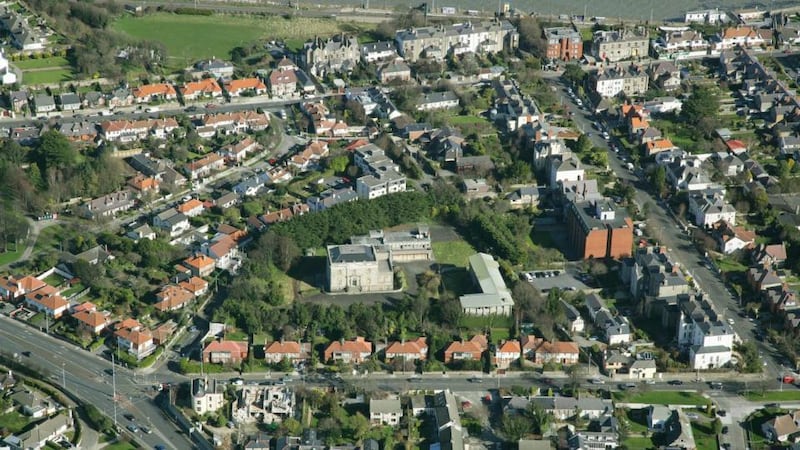Tucked away on 2.5 acres behind Temple Crescent and Alma Road, Neptune House is a Georgian building with many histories. The latest episode began and ended with developer Bernard McNamara's purchase of the site previously owned by US philanthropist Chuck Feeney in 2000, for €8m. Back then, a partnership – led by McNamara - planned to develop the protected site, but the project ran aground when planning was refused in late 2002 for five blocks and a basement car park. Later it secured permission to redevelop the house as luxury apartments, which has since expired.
Now Neptune is on the market as part of an Ulster Bank “encouraged sale” for €2.5 million through agents HT Meagher O’Reilly. Behind the graffitied entrance a burly security man is the only sign of life. With boarded-up windows, and a ghastly breeze block of student accommodation to the right, Neptune stands two-storeys over basement, a three-bay building of cut-granite with a pedimented doorcase with Doric pilasters at the centre. Built in 1767, it was later purchased as a seaside residence by the first Earl of Clonmel, better known as Copper Face Jack, who also owned a large, and now slightly more notorious house on Dublin’s Harcourt St. The house was often referred to as Temple Hill House, and in the 1930s it became St Patrick’s Infants Hospital. From here, 572 children were exported to the USA between the 1940s and 1970s.
Inside the double-height front hall and throughout the ground floor there is carefully restored neo-classical plasterwork attributed to the stuccodore Patrick Osborne. The original part of the house extends to about 1,208sq m (13,000sq ft). At ground floor level, the three reception rooms are quite grand with cornices and coving intact. Later renovations are evident from the parquet flooring in the small ballroom. The grand, winding main stairs – to the left of the entrance hall – has been carefully restored.

At basement level is a vast kitchen and dining space used by Trinity students when it was let to TCD by Chuck Feeney at a peppercorn rent of £120 per year. Moving upstairs, things begin to deteriorate a little thanks largely to the wholesale theft of copper from the roof in recent years, leading to water damage.
It’s understood Ulster Bank has spent €100,000 to restore it. On the first floor there are four huge bedrooms and one smaller one, all with multiple windows and fireplaces.
At the end of the hall stands a rooftop terrace – more a large block balcony with views of the crumbling 1990s accommodation to the right, and to the left a three-storey office block extension which links into the main house. These would need to be razed. On the second floor in the attic space are three additional bedrooms.
No self respecting Dublin home should be without its role in the 1916 Easter Rising, and Neptune is no exception. British reinforcement troops who landed in Dún Laoghaire to take on the Repuublican Army at the GPO stayed here.
Later the balance was redressed somewhat when the house was purported to have been used by Sinn Féin and the Irish Government for secret meetings in the lead up to the peace talks.
Neptune is a fixer-upper on a grand scale, deep pockets will be required to restore it for residential use. It’s possible greatest interest will come from investors eyeing up its potential as a commercial development.
















